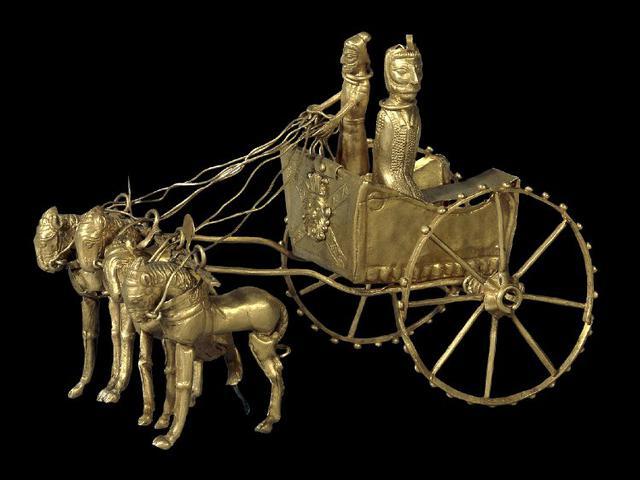Oxus Treasure

The Oxus Treasure is a fascinating archaeological find that offers a glimpse into the rich cultural tapestry of the ancient Persian Empire. This golden chariot, believed to date back to the period between 550 BC and 330 BC, was unearthed near the Oxus River in Central Asia. The intricate details of the chariot reveal a deep connection to the Persian culture and its peak of splendor. The figure of the driver and possibly the Satrap, a governor of the Persian Empire, are depicted on the chariot, showcasing the importance of these key figures in maintaining peace and order within the vast empire. Additionally, the presence of the Egyptian god Bes on the front of the chariot highlights the cultural and religious exchanges that occurred within the Persian Empire, reflecting the harmonious coexistence of diverse communities within its borders.
The Satraps played a crucial role in the administration of the Persian Empire, overseeing various provinces, enforcing laws, and collecting taxes. The use of the chariot as a symbol of power and authority underscores the empire's sophisticated organizational structure and its ability to maintain control over a vast territory spanning three continents. The intricate craftsmanship of the chariot also serves as a testament to the advanced skills of Persian artisans and their ability to create stunning works of art that transcend time.
One of the most intriguing aspects of the Oxus Treasure is the mystery surrounding its purpose. Was it a ceremonial object commissioned by a high-ranking official, a religious offering to a temple, or perhaps a cherished toy belonging to the children of an aristocratic family? The ambiguity adds to the allure of the chariot, inviting speculation and sparking curiosity about its origins and significance. Regardless of its original intent, the Oxus Treasure stands as a testament to the artistic and cultural achievements of the ancient Persian Empire, offering a window into a bygone era of opulence and grandeur.
As visitors marvel at the intricate details of the Oxus Treasure, they are transported back in time to an era of great empires and flourishing civilizations. The chariot serves as a tangible link to the past, allowing us to connect with the people and cultures that once thrived in the ancient world. Whether viewed as a work of art, a symbol of power, or a relic of a bygone era, the Oxus Treasure continues to captivate and inspire all who encounter it, serving as a reminder of the enduring legacy of the Persian Empire and its contributions to the world's cultural heritage.
© ChatGPT 3.5